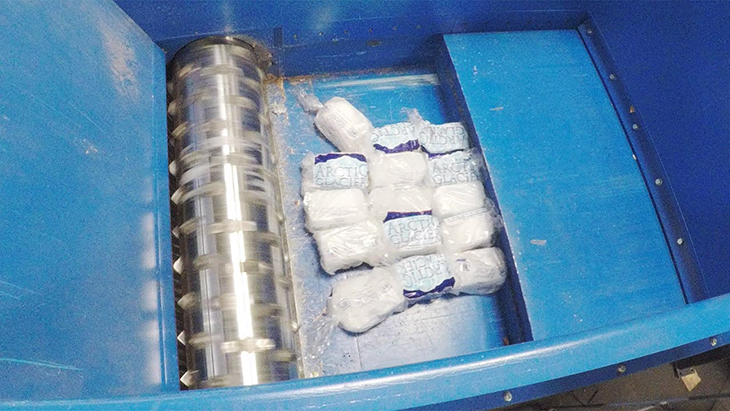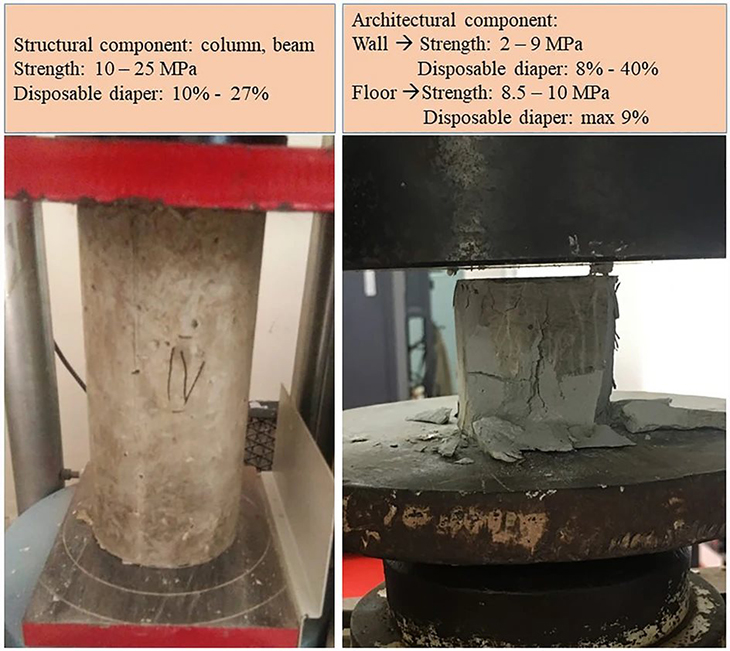
In their relentless quest for sustainable housing solutions in Indonesia, a nation with the world’s third-largest population, a group of visionary scientists embarked on an unconventional hypothesis: could used diapers, of all things, play a transformative role by replacing a portion of the sand typically used in concrete mixtures?
The manufacturing process of disposable diapers involves a combination of various materials, including wood pulp, cotton, viscose rayon, and plastics like polyester, polyethylene, and polypropylene. This peculiar blend of components, coupled with their rather unpleasant purpose, often leads to the unfortunate fate of most diapers—they end up in landfills or are subjected to incineration, contributing to environmental challenges.
However, the astute minds behind this innovative idea recognized the untapped potential within these discarded diapers. They saw an opportunity to repurpose and integrate these otherwise discarded resources into the construction industry, with the hope of addressing both the housing crisis and the mounting waste problem plaguing the nation.
By carefully extracting the usable components from used diapers and incorporating them into concrete mixtures, these scientists aimed to explore an unconventional avenue for sustainable and cost-effective housing solutions. The diapers’ diverse composition, ranging from absorbent materials to durable plastics, could potentially enhance the concrete’s properties, offering improved strength, insulation, and durability to the structures built with such innovative materials.
This groundbreaking research not only demonstrates the urgency to find alternatives to traditional construction practices but also underscores the importance of viewing waste as a valuable resource. By diverting diapers from their unfortunate destiny in landfills or incinerators, these scientists aspire to turn them into building blocks of a more sustainable future for Indonesia, where affordable housing and environmental stewardship go hand in hand.
As the scientific community eagerly awaits the results of this audacious experiment, there is a glimmer of hope that the seemingly repugnant diapers may indeed hold the key to a brighter future. With the potential to revolutionize the construction industry and minimize the environmental impact of discarded diapers, Indonesia stands at the forefront of a groundbreaking movement that could inspire similar initiatives worldwide.
Through their pioneering spirit and dedication to finding ingenious solutions, these scientists embody the essence of progress—a relentless pursuit of innovation that challenges conventional wisdom and transforms seemingly unsightly waste into a catalyst for sustainable change.
“Currently, the essential step in the recycling process for used diapers is to separate the plastic components from the organic fibers,” the authors of the paper on diaper construction said when they published their work in Nature.
“It necessitates the execution of many complicated procedures, including collecting, crushing, sanitizing, and sorting the components. Due to the difficulty involved in the process, only a few businesses are currently interested in recycling used diapers.”
Siswanti Zuraida, along with her colleagues at the School of Environmental Engineering, University of Kitakyuku in Japan, conducted a study involving the preparation of concrete and mortar samples. The team combined washed, dried, and shredded disposable diaper waste with cement, sand, gravel, and water.
Following the preparation, these samples underwent a curing process for a duration of 28 days. The researchers evaluated the strength of six different samples, each containing varying proportions of diaper waste, to determine their resistance to pressure without breaking. By conducting these tests, they were able to determine the maximum proportion of sand that could be substituted with disposable diapers in various building materials required to construct a house with a floorplan measuring 387 square feet (37 square meters), meeting the building standards set in Indonesia.

The researchers discovered that the waste from disposable diapers has the potential to replace a significant portion of the sand required for concrete used in constructing columns and beams for a three-story house, specifically up to 10%.
In the case of a single-story house, this proportion increases to 27% of the sand needed for making concrete columns and beams. Additionally, for partition walls, diaper waste can replace 40% of the sand required for mortar, whereas it only accounts for 9% of the sand in mortar for floors.
The authors acknowledge certain limitations in their study. They highlight the absence of any existing cooperation or supply chain for collecting, washing, and shredding diapers for material purposes. Moreover, the quantity of shredded diaper waste must be precisely determined, as tests indicated that differences as slight as 2% could compromise the structural integrity of the construction.
Nevertheless, using diapers for reducing landfill waste proves to be a highly cost-effective solution compared to other recyclable materials.
What are your thoughts? Please comment below and share this news!
True Activist / Report a typo


